
| Darin McQuoid | Blog | Reviews | Tutorials | River Directory |
Safari


Leaving Ned at the Busoga Trust in Masindi, Jesse and I got a ride to Murchison Falls, where we'd meet up with the boys to continue on to the Rwenzori Mountains, aka Mountains of the Moon to see if we could make a descent of its largest river. We get dropped off at Murchison Falls and find a nice campsite at the take-out above the falls. The good news is that the grass has been cut down and dreaded tsetse fly isn't leaving the tall grass to bite us in open terrain. Plus we have a few hours of sunlight left.
Thanks to Goal0 we were able to get all our
batteries charged for the upcoming week.

The key of adventure travel is ingenuity, Jesse puts my tripod to good use.
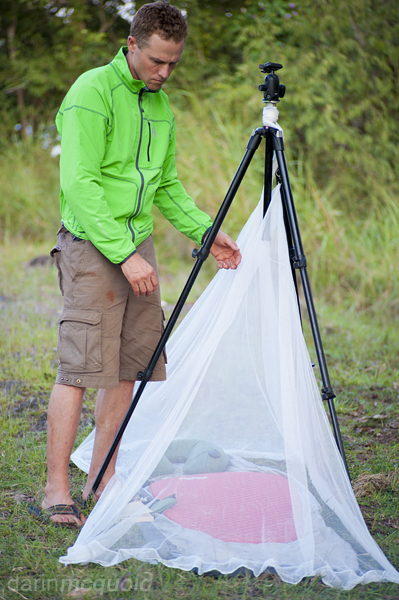
Good morning!
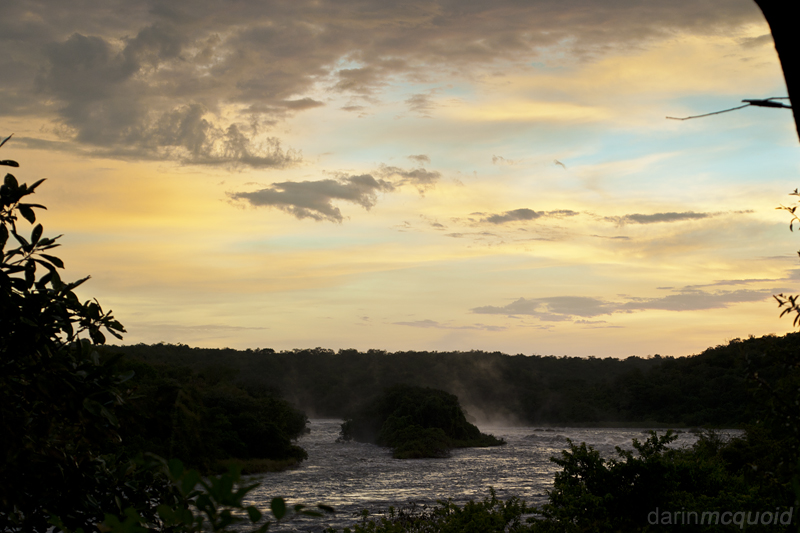
This image almost works. I like the bend in the tree but it's just too busy to be truly striking.

Murchison Falls
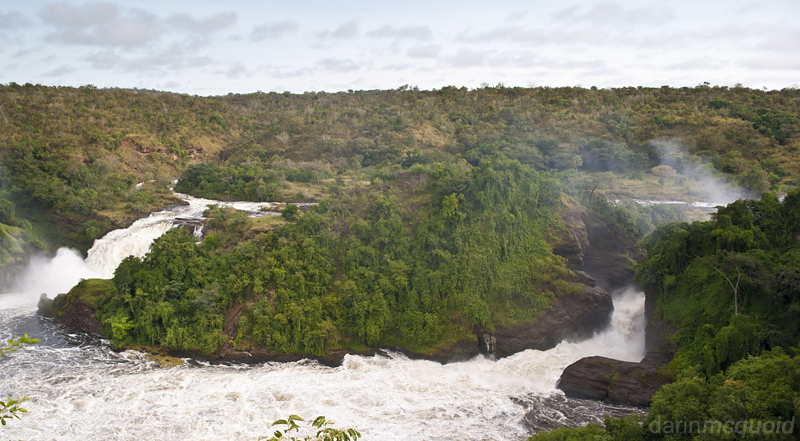
I am sure you can see it right here, a kayaker on the grassy knoll....
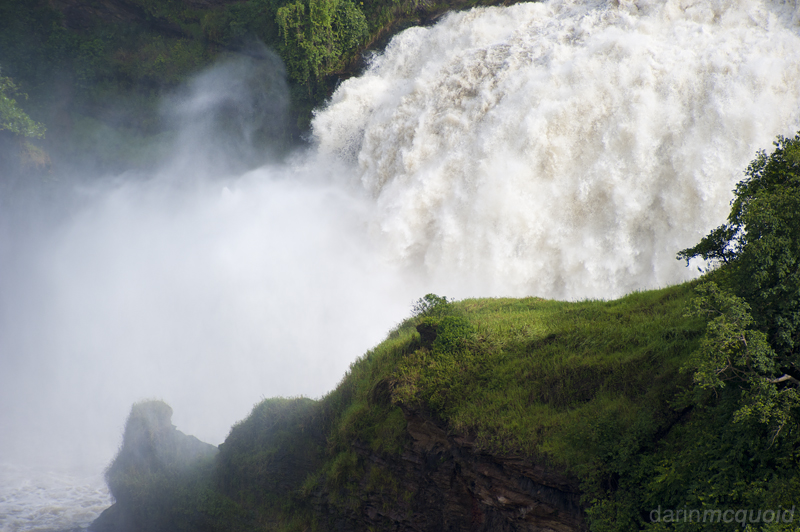
I've never seen anything surge like this channel, the water will rise and fall thirty feet every few seconds.

Quite a sight from above too, this Murchison Falls.
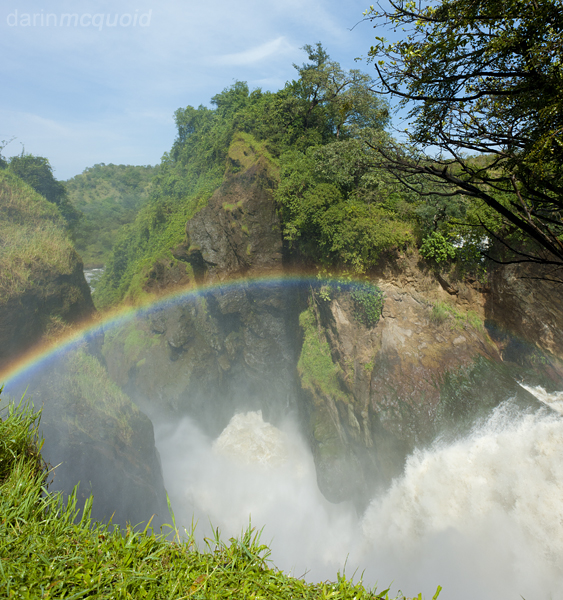
Well there isn't much else to do here at Murchison Falls, so we head to the Red Chili hostel for the evening.
Lawn mowing services at Red Chili
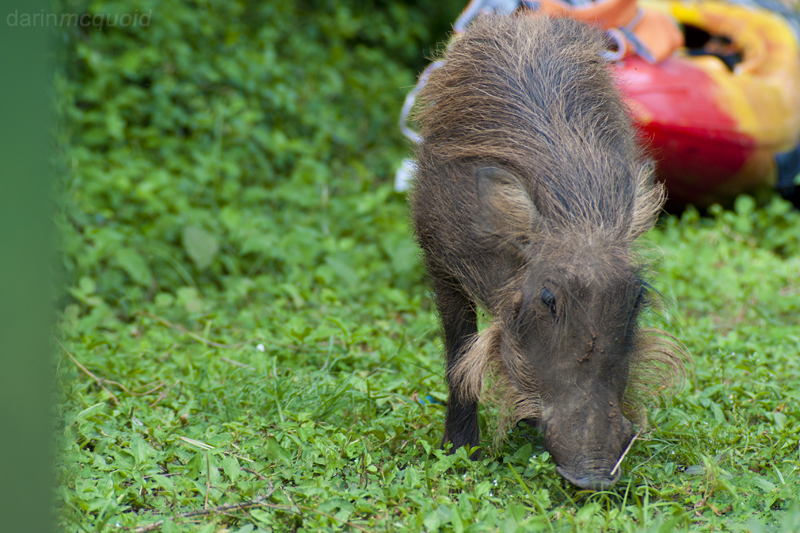
Sunrise at the ferry.
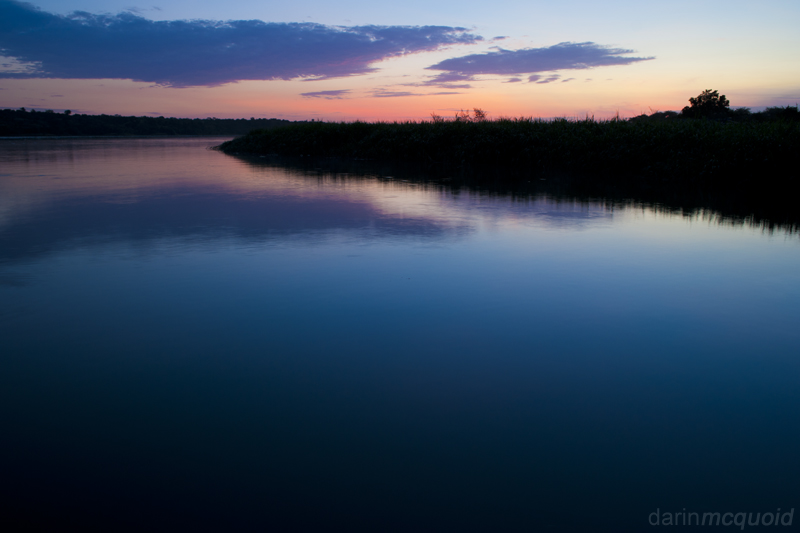

Sony NEX-5, Tamron 70-210 f/3.5 19AH @ 1/2000 f/4 ISO 400
All the stories of massive herds are true. It is something else to see in person.


The key of adventure travel is ingenuity, Jesse puts my tripod to good use.

The night starts off calm
enough, but clouds form as the last rays of light fade from the sky.
Hours later thunder claps and the downpour begins. This must be the
most violent thunder storm I've slept in. Kind of slept, it's too warm
to be in anything and I can feel the rain pound the outside of my bivy.
Towards morning the precipitation lightens up and a brief bit of rest
is possible before sunrise. I get up at first light to dry out and
enjoy the sunrise.
Good morning!

This image almost works. I like the bend in the tree but it's just too busy to be truly striking.

The crew shows up late in
the morning and we all walk down to take a look at the name sake of the
area; Murchison Falls. It's a gigantic cascade with an absurd amount of
volume split into two channels. There had been talk of scouting the
right side, and possibly portaging down the island.
Murchison Falls

I was ok with them
portaging down the island. It would make an incredible shot. Plus it's
funny to note how many published images of kayaking come from people
standing around waterfalls that have never been run. Maybe it was my
turn to make some coin on this strange phenomenon?
I am sure you can see it right here, a kayaker on the grassy knoll....

Despite a fair amount of posturing,
everyone decides that making an
unnecessary portage down the island into croc and hippo infested waters
probably isn't the best idea.
I've never seen anything surge like this channel, the water will rise and fall thirty feet every few seconds.

Quite a sight from above too, this Murchison Falls.

Well there isn't much else to do here at Murchison Falls, so we head to the Red Chili hostel for the evening.
Lawn mowing services at Red Chili

The next day will be our
first "rest day" of the trip. At least that's what it said on the
pre-trip itinerary. I had to laugh though, because the rest day also
involved a morning safari and eight hour drive towards the Mountains of
the Moon. We rise in the dark to catch the early ferry across the Nile
to a game reserve on the other shore. I'd always wanted the opportunity
to take images of the wildlife in Africa. Of course a few exotics are standard equipment for the job with
something like the 400mm
f/2.8 and a few teleconverters considered to be minimum. If you
know me, you know I don't operate on a large budget and won't be using
over $10,000 worth of equipment. Instead I was rolling with my $300
bargain quality 300mm f/4.5 ED-IF and a
$100 Tamron 1.4 teleconverter. Needless to say I was curious what kind
of results I'd get on our impromptu safari. Plus I'm really not sure
what to expect as I've never done anything like this.
Sunrise at the ferry.

Unfortunately the ferry is
late, and we don't get on until the sun is already up. The golden hour
is going to happen fast, and we start making the rounds to see what we
can see. Giraffes are one of, if not my favorite animal and I was only
too excited to see one in person.
It's nothing special as an image,
but that's one beautiful looking animal.

Sony NEX-5, Tamron 70-210 f/3.5 19AH @ 1/2000 f/4 ISO 400
All the stories of massive herds are true. It is something else to see in person.

Nikon D700, Tamron 70-210 f/3.5 19AH @
1/640 f/8 ISO 200
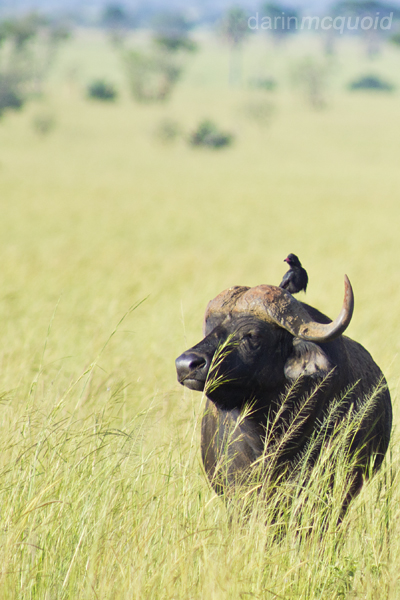
There's no such thing as too much giraffe. I could spend days doing this!

Some young Impala.

Nikon D700, Nikkor 300mm f/4.5 EDIF @ 1/2500 f/4.5 ISO 200
Elephants love the dense underbrush, and it was no surprise that we didn't see any in the open. Magnificent to see though.
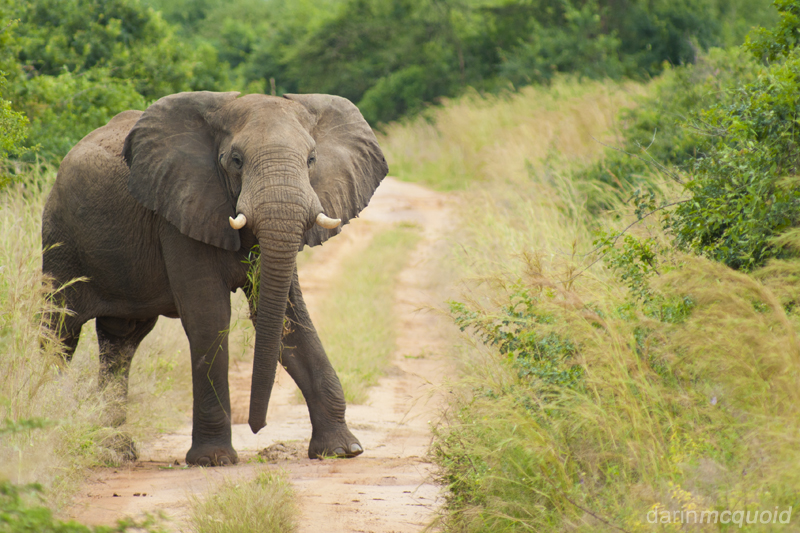
A true highlight of the trip for me is a brief moment to capture the national bird of Uganda, the Crested Crane. I enjoy the soft texture of the grass surrounding the crane.
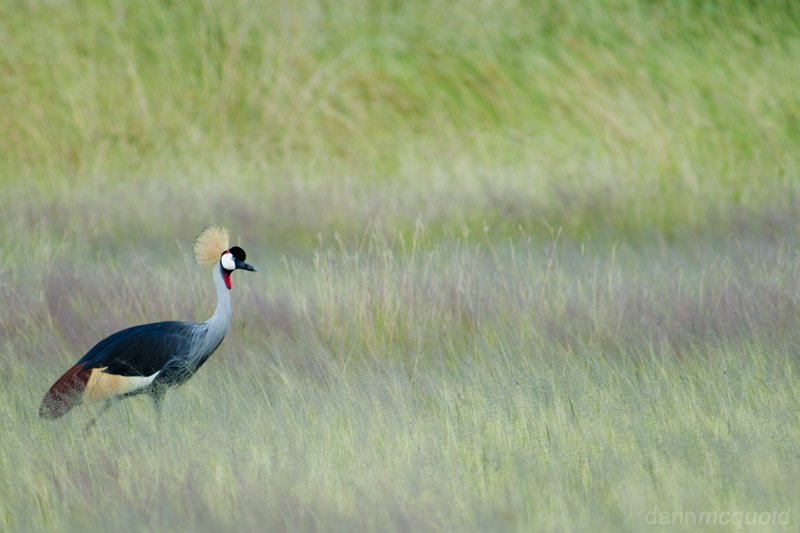
Nikon D700, Nikkor 300mm f/4.5 EDIF + Tamron 1.4 TC @ 1/400 f/6.3 ISO 200
Of course there were some Hippos too. They just aren't as cute when you've been avoiding them on the river.

Some like it...muddy.
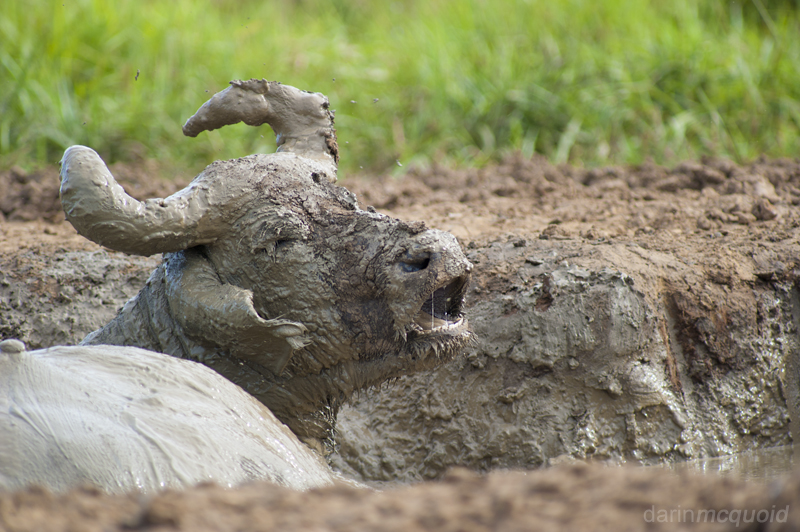
Of course one last giraffe image to finish things off.
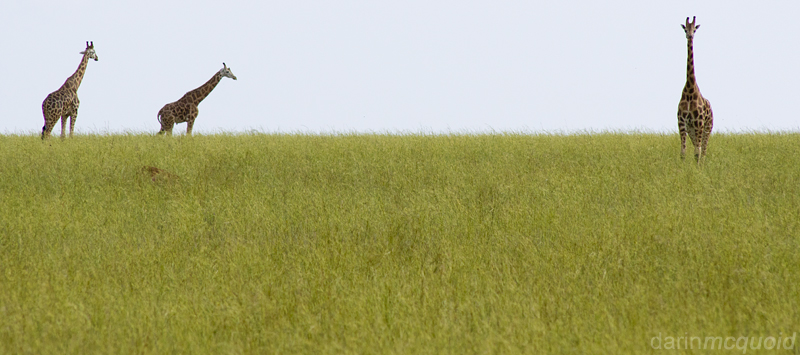
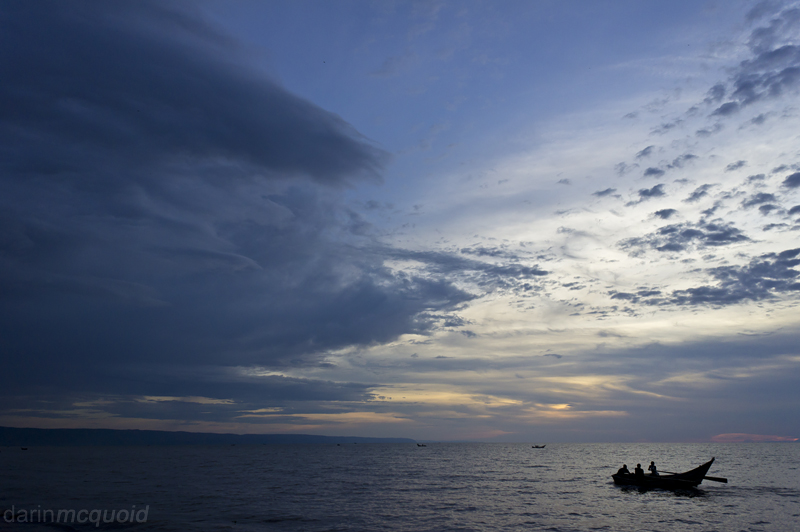
An old fishing boat and many dragonflies on the lake shore.
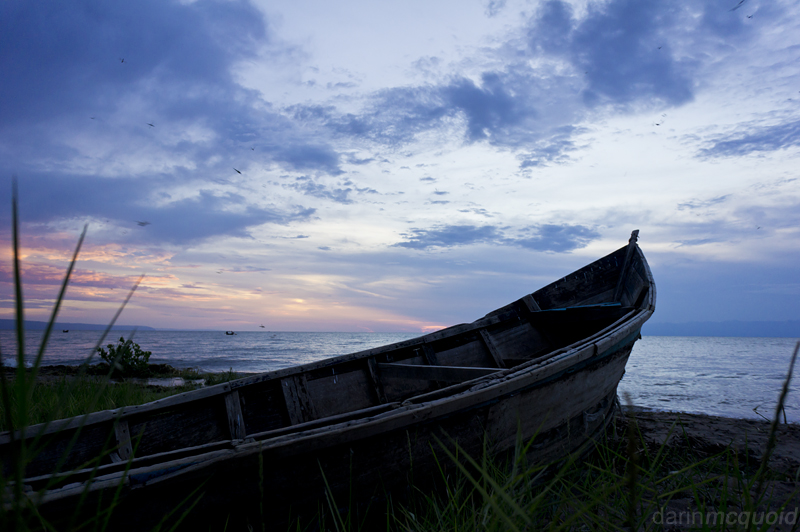
Two abandoned boats.

Sony NEX-5, Sony 16mm f/2.8 @ 1/40 f/2.8 ISO 200
The light fades fast, as does the SS Robert Coryndon.
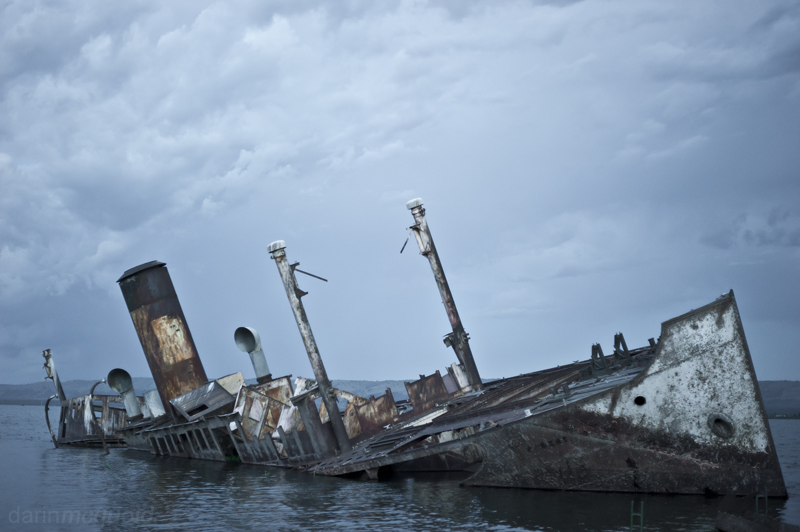
Nikon D700, Nikkor 50mm f/2 AI-S @ 1/50 f/2 ISO 1600

There's no such thing as too much giraffe. I could spend days doing this!

Some young Impala.

Nikon D700, Nikkor 300mm f/4.5 EDIF @ 1/2500 f/4.5 ISO 200
Elephants love the dense underbrush, and it was no surprise that we didn't see any in the open. Magnificent to see though.

A true highlight of the trip for me is a brief moment to capture the national bird of Uganda, the Crested Crane. I enjoy the soft texture of the grass surrounding the crane.

Nikon D700, Nikkor 300mm f/4.5 EDIF + Tamron 1.4 TC @ 1/400 f/6.3 ISO 200
Of course there were some Hippos too. They just aren't as cute when you've been avoiding them on the river.

Some like it...muddy.

Of course one last giraffe image to finish things off.

I was pleasently surprised
at how well my limited options served me on the safari. All of the
images have been slightly cropped, and only one heavily so. Done with
our morning
safari we quickly loaded up and drive to Butiaba, a fishing town on the
shore of Lake Albert. The town used to be a major shipping center for
goods coming from the DRC, but that trade route has since vanished. The
evening light was surreal as we walked around town and saw the sights,
including the remains of the SS
Robert Corydon.
Fishermen head out on Lake Albert in the
evening.
An old fishing boat and many dragonflies on the lake shore.

Two abandoned boats.

Sony NEX-5, Sony 16mm f/2.8 @ 1/40 f/2.8 ISO 200
The light fades fast, as does the SS Robert Coryndon.

Nikon D700, Nikkor 50mm f/2 AI-S @ 1/50 f/2 ISO 1600
We spent the evening in Butiaba with plans to start the final
push of the drive to begin our hike to the river in the Mountains of
the Moon in the morning.
Thanks to First
Ascent for sponsoring this trip, and to Jackson Kayak, Kokatat, Werner and Bomber Gear for
supplying some
wonderful gear.